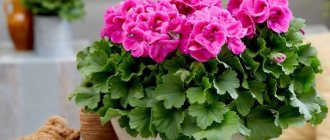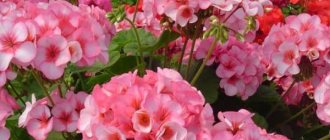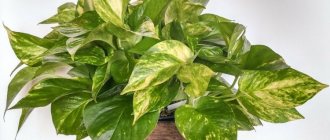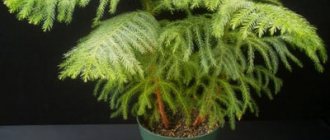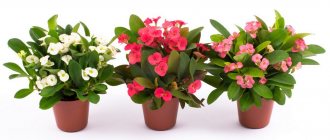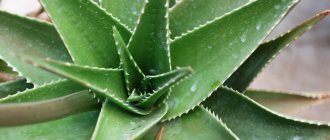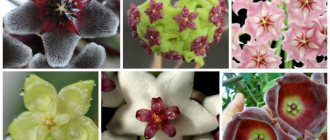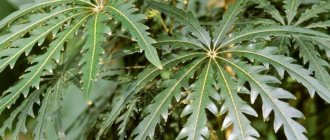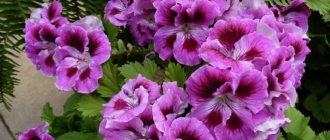Fragrant geranium is a “green first aid kit” in the house. A long time ago, people paid attention to the large number of essential oils contained in the plant and their positive effect on the human body. A beautiful evergreen plant that does not require special care appeared in our homes in the 19th century. It has been known in England since the 17th century. It is difficult to imagine that such a simple and widespread plant came to us from South Africa. In the area of the Cape of Good Hope there is the Cape region with an amazing warm climate that has formed a unique flora. Many of our familiar houseplants originated in this region. Fragrant geranium has undergone a long selection, but cannot boast of a large variety of varieties.
Geranium is the popular name for pelargoniums; Carl Linnaeus united them into one group. At that time, pelargonium was actively used for landscaping gardens. Real geranium grows everywhere in our country, with the exception of the northern regions. She winters well outside and does not need shelter. Pelargonium comes from warm places and in the middle zone it can decorate flower beds only in the summer.
Fragrant pelargonium differs from other pelargoniums in its pronounced aroma. Depending on the variety, it can be chocolate, strawberry, citrus or apple.
General information
Pelargonium stands out among all kinds of geraniums. This elegant herbaceous plant is valued by amateur gardeners for its delicate foliage and characteristic pleasant aroma. At the slightest movement from the breeze or from touching the leaves, a light spicy smell spreads around the plant.
For the first time, Europeans discovered a wonderful plant on the distant South African coast. Three hundred years have passed since this discovery.
Breeders have developed many varieties. They differ in the shapes and sizes of leaves, and have different colors of flowers. But they are all united by the peculiarity of pelargonium to emit a smell, due to the presence of specific glands located on the leaves. Fragrant geranium releases phytoncides in the room. They have an antimicrobial effect and help improve sleep.
Essential oils, various organic acids, flavonoids with antioxidant properties, and other compounds found in the plant are used in medicine, perfumery, and even in cooking.
The perennial is a rather tall herbaceous branched bush. Its height reaches about one meter. The fibrous root system is dense and strong. The leaves are carved, strongly dissected, and have a beautiful light green color.
Some varieties of fragrant geraniums bloom very rarely at home. The small flowers are pale pink. Breeders carefully preserve varieties with the scent of roses, herbs, and citrus fruits.
Flowering geranium
Geranium bordered or zoned
This variety of geranium is the most popular in the world. The plant got its name because in the middle of its leaves there is a peculiar border of brownish color. Flowers are usually two-colored and can be of the following forms:
- With 5 petals - simple
- With 6-8 petals - semi-double
- If a flower has 8 petals or more it is called double
If zonal geranium is not pinched, it can grow up to 1 m. A special feature of zonal geranium is its round inflorescences, usually protruding above the leaves.
Note. Only zonal geranium loves very bright light; other types of geranium can grow in partial shade.
Geranium zonal terry
Geranium in the form of roses
The double flowers of this geranium look like small roses. There are up to 20 of them in one inflorescence. The petals are one-color or two colors, their outer side is lighter.
Geranium in the form of roses
Geranium in the form of tulips
The flowers (1.5 cm in diameter) of this species resemble tulips that have not yet bloomed. They remain half-closed until the end of flowering. There are up to 40 flowers in one inflorescence. The flowers are pink or red, sometimes white, but rarely.
Geranium in the form of unopened tulips
Geranium unique
Geranium has strongly dissected leaves that have a faint odor. Can grow 1 m or more. Stems are woody. They bear small red flowers, less often pink or white, with dark veins or spots on the petals, like royal geraniums. The petals become lighter towards the middle.
Geranium unique
Geranium angel
This geranium grows in bushes up to 35 cm, no more. The flowers are small, usually two-colored, like pansies. The upper petals on the flower are larger than the lower ones. Geranium comes in a wide variety of shades.
Angel geranium is unpretentious and can grow in both sunny and shaded places. Where there is little light, a pot of geranium is hung and the flower is grown hanging down. And if there is a lot of sun, then the geranium bush grows upward and blooms profusely.
Attention. Geraniums of the “angel” and “royal” varieties are afraid of small white moths - whiteflies that infect them.
Angel Geranium
Royal Geranium
Geranium was called royal because of its beautiful large flowers (5-7 cm in diameter). The flowers are usually multicolored and come in the following colors:
- Darker or lighter in the middle
- Speckled
- Spotted or streaked
Geranium petals overlap each other like a fan.
The edges of the petals are:
- Simple
- Wavy
- Corrugated
The bushes are small in height - 30-60 cm. The leaves have serrations and are odorless. Royal geranium blooms less than other geraniums - 3-4 months. It is also more capricious - it grows only as an indoor flower, but dies in the open air.
Fragrant varieties of pelargonium
To enhance the natural smell, hybrid varieties were bred. With the lightest touch, the delicate leaves smell deliciously of peaches, apples, tart nutmeg, lemons or mint. There is even a variety with a pine scent.
Varieties of indoor fragrant geranium have a variety of leaf colors, attract with shades of flowers, and fascinate with aromas:
- Mabel Gray (lemon). The variety has a strong lemon aroma. The plant has rough leaves and pronounced veins. There is pubescence on the inside of the leaves. This is a flowering variety. It is decorated with umbrellas of small lilac-pink inflorescences.
- Spicy peppermint. The spreading plant has thin carved leaves of gray-green color. It blooms with medium-sized pale pink inflorescences. Exudes a bright mint aroma. Responsive to good care and feeding.
- Apple cider. A compact variety that blooms with tiny white flowers. The small leaves have a round shape and folded edges. Has an unusual apple aroma. Loves regular watering.
- Enchanting. This variety will fit perfectly into a garden composition. The spectacular shrub surprises with the golden edges of large leaves. Has a wonderful lemony pink summer scent. In indoor conditions, this fragrant geranium grows reluctantly.
- Lady Plymouth. This graceful plant is great for garden containers. The openwork light green crown consists of leaves with a white edge. Fragrances with the fresh aroma of a blooming rose. Watering should be moderate.
Features of flowering
Most varieties of fragrant geranium bloom between May and October for about 40 days. Some varieties have a year-round flowering cycle.
Geranium produces single, paired or collected in inflorescences in the form of zonal buds, the petals of which can be of a wide variety of shades. The variety affects not only the color and duration of flowering, but also the shape of the inflorescence and the number of petals on it.
On average, one inflorescence consists of 5 or 8 delicate velvety petals, in the center of which a fruit-box in the shape of a stork’s beak then ripens.
Note! There are non-flowering evergreen varieties, for example, pelargonium bontrosat.
Non-flowering variety of fragrant pelargonium Bontrosai
In the open ground
Fragrant pelargonium is grown both at home in pots and in the garden in open ground. Growing plants at home is not at all troublesome, but caring for fragrant geraniums planted in the garden requires replanting every autumn. Originally from Africa, the plant does not tolerate Russian cold. You need to carefully dig up the bush and store it in a cool place at + 10 ˚C all winter. But geraniums in the garden grow into a large bush over the summer. It is difficult to transplant without breaking the fragile branches. Experienced gardeners dig the plant into a flowerbed in a pot in the spring. This will help relocate the pelargonium in the fall.
Geranium loves fresh air. As soon as the temperature allows, it is moved to a glazed balcony or insulated terrace.
Rules of care
Fragrant geranium does not like high temperatures; in summer it is comfortable at 18-25°, and in winter at 14-15°. The plant is able to create a reserve of moisture in the leaves and stem, so it does not need frequent watering. The soil is moistened after the top layer has dried. In summer - once every two or three days. In winter, watering is reduced. During the cold period, waterlogging leads to rotting of the root collar.
When applying fertilizing, it should be remembered that an abundance of nitrogen promotes leaf growth, but reduces the aroma. It is necessary to fertilize geraniums during the period of active growth. When using complex drugs, the recommended dosage is halved. Organic matter is poorly absorbed by the plant; it is better to discard it. Lush flowering is promoted by the addition of phosphorus and potassium. In winter, you can refuse feeding.
To achieve abundant flowering and a compact plant shape, it is recommended to prune every spring. Leave no more than three buds out of the annual growth. In summer, the shoots are pinched, creating the desired shape of the bush. Care begins with the beginning of the development of geraniums from cuttings. Without pruning, the plant begins to grow, resulting in a tall vine.
You can read about the rules for caring for other types of geraniums without leaving our website. We have prepared materials about the following varieties: Peony, Ivy-leaved, Ampelous, Royal. You will also learn about the characteristics of indoor and garden geraniums, zonal, hybrid and with white flowers.
Houseplants
Fragrant geraniums receive good care at home.
The photo shows all the beauty of this grateful, very unpretentious plant.
Recommendations from experienced gardeners will help you grow a wonderful indoor plant:
- Although geraniums are light-loving, they tolerate placement on a north window or at a distance from the window quite easily. Still, the optimal place for them would be western or eastern windows. In winter, it is better to illuminate plants with lamps. Due to lack of lighting, pelargonium branches stretch out and the leaves turn pale.
- A distinctive property of geranium is that it can accumulate moisture in its stems and leaves. But it does not tolerate excessive humidity. Therefore, pelargonium does not need to be sprayed. Watering is carried out as the soil dries.
- In winter, it is best to place the plant on a cool windowsill, where the temperature is about 16˚C. From spring to autumn cold, pelargonium will feel great on an open balcony or terrace.
- When a plant lacks nutrition, it becomes lethargic and pale. The leaves become smaller and flowering stops. Fragrant geranium is fed with liquid complex fertilizers. You cannot add fresh organic matter to the soil.
- Proper pruning will make the bush more luxuriant. The elongated stems are pinched, leaving a couple of leaves.
Proper care will help the plant develop harmoniously and lushly.
Correct fit
To replant pelargonium, you need to select a flower pot that matches the size of the plant’s root system. It should be only a couple of centimeters wider than the previous one.
In a spacious pot, geranium will develop poorly and there will be a risk of waterlogging. Possible root rot.
To prevent moisture from stagnating, a layer of expanded clay is placed on the bottom. After replanting, water well to shrink the soil mixture.
Fragrant pelargonium differs from other types of geraniums in that it does not like acidic soil. Peat is contraindicated for her.
Properly selected soil composition will ensure good plant development and abundant flowering.
Video: Royal geranium of unusual colors
Geranium variegated
Geranium is valued for its beautiful leaves:
- White or brownish spots on a green leaf
- On a green leaf there is a border of a different color
- The leaf has veins of a different color
- Round or openwork
- Tricolor
Geranium of this variety blooms very rarely, and some varieties do not bloom at all.
Attention. To preserve the decorative appearance of the leaves of variegated geraniums, a lot of sun is required in summer, and in winter you will have to additionally illuminate the place with flowers.
Geranium variegated
Geranium cactus
Cactus geranium flowers have elongated, sometimes needle-shaped or curled petals. They can be one color or several. This type of geranium is rare.
Geranium cactus
Geranium ivy-leaved
The leaf shape of this geranium is similar to ivy leaves. Just like ivy, ivy-leaved geranium falls with its leaves and flowers downwards. Can grow up to 1 m in length. The leaves are smooth, glossy, monochromatic, sometimes variegated, looking like artificial flowers. Geranium flowers are up to 5 cm in diameter, with 5 or more petals.
Geranium ivy-leaved
Geranium dwarf
The height of geranium is 12-30 cm. It blooms profusely. There is no need to pinch the shoots; the geranium itself forms a neat bush.
Geranium dwarf
Soil for planting
The soil for planting should:
- allows air and water to pass through well;
- be with the addition of fine expanded clay, sand, moss;
- have a neutral reaction;
- contain a small amount of nitrogen.
An inexperienced gardener can buy a ready-made mixture intended for geraniums in the store.
To independently compose a planting mixture, it is recommended:
- garden soil - ten parts;
- chopped sphagnum moss - one part;
- calcined sand - one part;
- humus - 1/2 part.
Frequent replanting of fragrant pelargonium is not required. The soil and container are changed every year.
Reproduction
There are several ways to propagate fragrant geranium:
- sowing seeds;
- using cuttings;
- dividing the bush.
Growing fragrant pelargonium from seeds is a labor-intensive process and quite long. For sowing, use a shallow container. The soil is spilled with a weak solution of potassium permanganate.
The seeds do not need to be sprinkled with soil; they germinate in the light. It is necessary to ensure high humidity by covering the crops with film. When shoots appear, the film is removed. Seedlings dive after three or four leaves appear. With this method of reproduction, maternal properties are not always transmitted. It is possible to obtain original plants.
For cuttings, cut off the tops of the shoots with two internodes. Cuttings take root easily in water. New bushes inherit all the properties of the previous plant.
In spring, propagation of fragrant geraniums is possible by the fastest method - dividing the mother bush.
It is taken out of the pot and cut so that independent bushes with a root system are obtained.
Protection from diseases and pests
Geranium fragrant is a very healthy plant. But with poor or improper care, she can get sick and die.
Excessive watering increases the risk of fungal diseases:
- gray rot spores form plaque on leaves and buds;
- root rot with excessive soil moisture destroys the roots;
- stem rot is visible on the cuttings as black weeping spots. If cuttings are affected by it, it is impossible to cure them. The plant is destroyed and the soil is sterilized in the oven.
For treatment, “Fundazol”, “Fitosporin-M”, “Topaz”, “Gamair”, “Baktofit” are used.
When the air is dry and hot, spider mites are found on the leaves. Invisible at first glance, they suck the juice from the plant. Such leaves begin to turn yellow and then dry out, curling into a tube. Transparent mites are easy to spot upon careful inspection.
Prepare a soap solution with which the pelargonium and the ground underneath it are generously moistened. After a couple of hours, the plant is washed with clean water. The drugs Fitoverm and Anti-mite will help against the pest.
In summer, geraniums are attacked outdoors by thrips and whiteflies. To protect against them, plants are treated with the preparations “Aktara”, “Aktellik”, “Confilor”.
Application of pelargonium
The air around fragrant geranium is filled with volatile essential substances. They have a calming effect. Pelargonium is also an excellent antiseptic. The plant also has medicinal properties:
- for lumbar or joint pain, mashed leaves applied as a compress will help;
- fragrant geranium juice heals wounds and cuts on the skin;
- infusions or decoctions will relieve inflammation in the throat with sore throat, pain with otitis media;
- the smell of geranium is a powerful antidepressant (a pleasant aroma normalizes sleep, relieves fatigue, and relieves irritability).
Fragrant pelargonium is used as a raw material in the production of geranium oil. It is widely used in perfumery, cooking and pharmaceuticals.
But preparations containing fragrant geranium or its oils should not be used:
- pregnant women and children;
- people prone to allergies;
- patients with stomach ulcers and gastritis;
- people with low blood pressure.
Fragrant geranium is considered a talisman for the family hearth. Have this plant in your home. You will notice how psychological comfort and an atmosphere of coziness will settle in it.
How to use
From pressure
Fragrant pelargonium can lower blood pressure. To do this, just knead and smell a fresh leaf in your hands, drop a few drops on a scarf or in an aroma pendant. You can tie a sheet to the back of your wrist.
For headaches
Geranium essential oil helps with migraines and headaches. You can add a couple of drops to the aroma lamp or on a scarf.
For hemorrhoids
To treat hemorrhoids, make candles from geranium leaves yourself. The leaves are beaten, rolled into tubes and inserted into the anus 1-2 times a day after defecation.
For insomnia
A good sleep will be ensured by a herbal pillow containing geranium leaves. You can put a scarf under a regular pillow, onto which you have previously dropped a couple of drops of geranium essential oil.
For diarrhea
Treatment of long-lasting diarrhea is effective with an infusion of the plant. Pour 0.5 liters of water at room temperature into a jar, add 2 tablespoons of crushed leaves and leave for 8 hours. The infusion is filtered and drunk in small portions throughout the day.
For eczema and dermatitis
A tablespoon of fresh crushed leaves is poured into a glass of boiling water and placed in a water bath for 10 minutes. The broth must be filtered and hot water added to a volume of 200 ml. The decoction is taken before meals, one tablespoon at a time. The affected areas of the skin are lubricated with a decoction, and compresses are applied to them.
For otitis media
For treatment you will need 5 geranium leaves, 1 tablespoon of camphor alcohol and 50 grams of rye or oatmeal. The leaves are ground, all the ingredients are mixed, and a compress is applied to the outer ear. It is imperative to consult your doctor in advance.
During menopause
Chopped leaves in a ratio of 3 tbsp. 25 ml spoons of valerian infusion and a glass of whey are mixed and infused for 14 hours at room temperature. Then add 2 tbsp. spoons of butter and rye flour to make a dough. The compresses are applied to the calves and neck overnight and thrown away in the morning.
In case of adrenal gland dysfunction
To prepare the decoction, you need to chop 2 leaves, pour a glass of boiling water and leave for 20 minutes. The broth is filtered and drunk before each meal.
For hemorrhagic fever
Clean roots are crushed and poured with 1 liter of water, brought to a boil and boiled for 20 minutes. The decoction is drunk warm, strained ½ cup every 20 minutes. strain and add hot water to a volume of 200 ml. The decoction is taken before meals, one tablespoon at a time. The affected areas of the skin are lubricated with the decoction and applied as a compress.
For otitis media
For treatment you will need 5 geranium leaves, 1 tablespoon of camphor alcohol and 50 g. rye or oat flour. The leaves are ground and all the ingredients are mixed, a compress is applied to the outer ear. It is imperative to consult a doctor.
During menopause
Chopped leaves in a ratio of 3 tbsp. spoons per 25 ml. valerian infusion and a glass of whey are mixed and infused for 14 hours at room temperature. Then add 2 tbsp. spoons of butter and rye flour to make a dough. Compresses are applied to the calves and neck overnight and thrown away in the morning.
In case of adrenal gland dysfunction
To prepare the decoction, you need to chop 2 leaves, pour a glass of boiling water and leave for 20 minutes. The broth is filtered and drunk before each meal.
